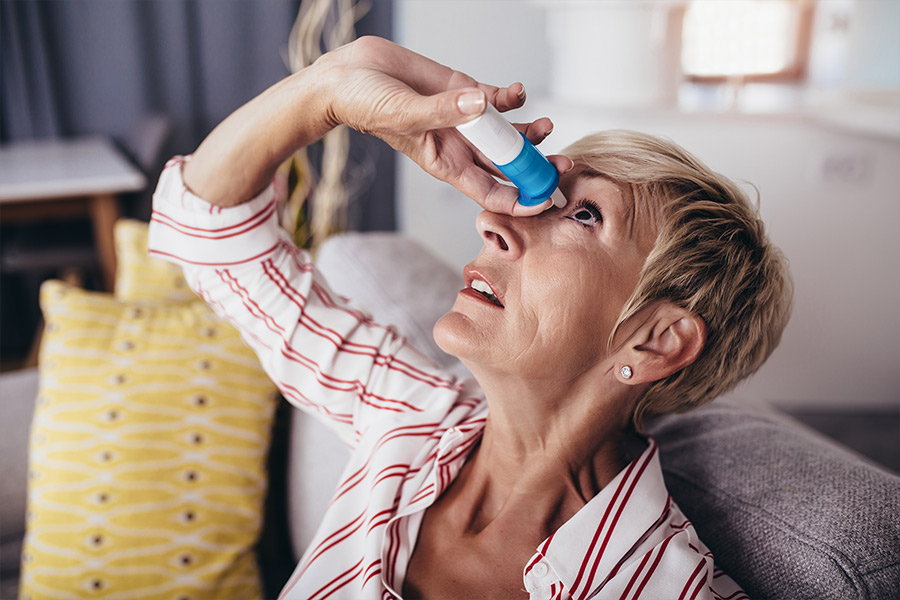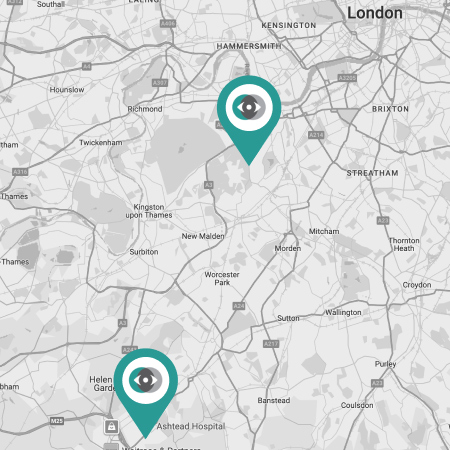
How Long Do I Need to Take Eye Drops After Cataract Surgery?
After cataract surgery, one of the most common questions people have is: “How long do I need to use eye drops?”
The short answer is: usually for about 4 weeks, but it can vary depending on your eyes and how you heal.
In this guide, we’ll walk through why eye drops are so important, how long to use them, and what to expect during recovery.
Why do you need eye drops after cataract surgery?
During cataract surgery, the cloudy lens in your eye is replaced with a clear artificial one. Although it’s a gentle and common procedure, the eye still needs time to heal afterward. Eye drops help make sure your eye stays healthy and heals properly.
There are usually three main types of drops you’ll be asked to use:
- Antibiotic drops- these protect your eye from infection.
- Steroid drops- these reduce swelling and help with healing.
- Anti-inflammatory drops- these help manage discomfort and prevent irritation.
Sometimes, you might get combination drops that include more than one type in the same bottle.
How long do you need to use the drops?
Most patients use drops for about 4 weeks after surgery.
Here’s what a typical schedule looks like:
- Week 1: Eye drops 3-4 times a day (depending on the type).
- Week 2-3: Slowly reduce to twice a day.
Professor Paul Ursell will tell you when to stop each type of drop. It’s important not to stop early, even if your eye feels fine, finishing the full course helps avoid problems later.
What happens if you stop using drops too soon?
If you stop before your eye has fully healed, a few things can happen:
- Your eye might stay red or irritated longer.
- Swelling could come back.
- There’s a higher risk of infection.
Always follow the full course unless Professor Paul Ursell or your eye care team tells you otherwise. If you ever run out of drops early, contact your clinic for more.
What if you forget a dose?
Don’t panic! Just use your drops as soon as you remember. If it’s almost time for your next scheduled dose, skip the missed one and continue as usual. Don’t double up, that can make your eye sting or feel uncomfortable.
To make it easier to remember:
- Keep your drops in a visible spot, like next to your toothbrush.
- Set reminders on your phone.
- Ask a family member to help remind you for the first few days.
How to put in your eye drops correctly
Getting drops into your eye can be tricky at first, especially if your vision is still blurry. Here’s a simple step-by-step guide:
- Wash your hands with soap and water.
- Tilt your head back or lie down comfortably.
- Pull down your lower eyelid gently to make a small pocket.
- Hold the bottle above your eye (but don’t touch your eye with it).
- Squeeze one drop into the pocket.
- Close your eye gently for 30 seconds.
- Wipe any extra drops from your cheek with a clean tissue.
If you have more than one kind of drop, wait at least 5 minutes between them so each one can work properly.
Common side effects, and when to call your surgeon
Mild stinging or blurred vision for a few seconds after using drops is normal. But if you notice any of these symptoms, contact Professor Paul Ursell’s team or your eye clinic right away:
- Strong pain that doesn’t go away
- Sudden vision loss or dark spots
- Redness or swelling that gets worse
- Yellow or green discharge
- A feeling like something is stuck in your eye
These signs could mean infection or inflammation, which need quick attention.
Do both eyes need drops?
If you only had surgery on one eye, you’ll only need drops in that eye. If you have both eyes done (usually a few weeks apart), you’ll likely need drops for each eye separately, following each schedule as advised.
You can share eye drops between eyes, even if they’re the same type.
What happens after you finish the drops?
When your course is complete, your eye should feel comfortable, and your vision will likely be much clearer than before surgery.
You may have a follow-up visit with Professor Paul Ursell or your optometrist to check that your eye has healed fully. Most patients can return to normal activities, like reading, driving, and working, soon after.
If your eye feels dry or gritty once you’ve finished your medicated drops, your surgeon may suggest artificial tears (lubricating drops). These can help keep your eyes feeling fresh and moist.
Tips for making eye drop use easier
- Store drops in a cool, dry place (some need the fridge, check the label).
- Don’t let the tip of the bottle touch your eye or eyelashes.
- Keep track of how long you’ve used each bottle, most should be thrown away 4 weeks after opening.
- Always follow your written aftercare instructions from Professor Paul Ursell’s clinic.
If you struggle to put drops in by yourself, you can buy an eye drop dispenser from a pharmacy. Or ask a friend or family member to help for the first few days.
Why following your drop schedule matters
Using your eye drops properly is one of the most important parts of healing after cataract surgery. They:
- Protect against infection
- Keep inflammation low
- Help your new lens settle comfortably
- Support clear, sharp vision as you recover
Skipping doses or stopping too soon can slow your healing, or even cause complications.
By following your drop plan exactly as Professor Paul Ursell advises, you’ll give your eyes the best chance to heal quickly and comfortably.
Final thoughts
After cataract surgery, using your eye drops correctly is just as important as the surgery itself. Most people use drops for around 4 weeks, and the schedule is easy to follow once you get used to it.
With careful care, clear guidance from Professor Paul Ursell, and regular follow-up, you’ll be on your way to bright, sharp vision again in no time.
Take the suitability self test today to see if you’re ready for cataract surgery, and take the first step toward clearer sight.
Are you suitable for vision correction surgery?
It isn’t suitable for everyone.
The first step is to book an assessment so you can find out whether you can benefit.
Our most popular procedures
What our patients say…
★ ★ ★ ★ ★“Excellent result. Complete confidence in Paul Ursell. Quiet, quick, and efficient. Peaceful and comfortable hospital.”
★ ★ ★ ★ ★
“The cataract surgery on both of my eyes went very smoothly without any problems. There was no pain afterwards and I didn’t have to wear any eyepatch. I would highly recommend Professor Ursell for cataract surgery.”
★ ★ ★ ★ ★“Highly professional, extremely efficient, and an excellent communicator, Paul exudes experience, knowledge, and ability. The whole process — initial consultation, operation, and post-op check-up — was wonderfully stress-free. I now have 20/20 vision, am glasses-free, and I am delighted by the results.”
★ ★ ★ ★ ★
“The cataract surgery has completely changed my life. Mr. Ursell put me at ease and explained all options. The procedure was quick and painless and completely successful, and I now have 20/20 vision in my good eye. One of the reasons I had the surgery was because of Mr. Ursell’s standing and experience. Cannot praise highly enough.”
★ ★ ★ ★ ★
“I was very short-sighted and my cataracts badly affected both reading and distance acuity. After the operation I now have very good distance vision (glasses-free) but still need glasses for reading. (This was the expected outcome as I did not want multi-focus implants). The operation was quick and painless, and I had no post-operative discomfort at all (which surprised me). The results are remarkable.
I can certainly recommend Professor Ursell. He is a personable consultant and a skilled surgeon.”
★ ★ ★ ★ ★
“Dr. Paul Ursell squashed many of my concerns for not having cataract surgery. He offered comfort with examples of his long/distinguished career and new technology that he applies to the surgery.
Both before and after the surgery, Dr. Ursell and staff gave me the information and attention I needed. It was a great success, and I highly recommend Dr. Ursell.”
We have replaced the images of real patients who provided these testimonials to protect their privacy.








